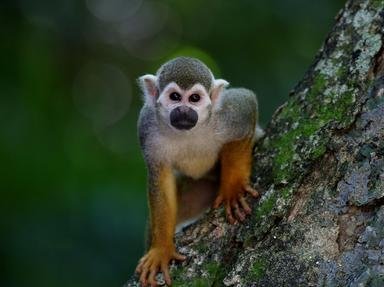Quiz Answer Key and Fun Facts
1. There are over 350 species of primates on planet Earth.
2. All lemurs are endemic to Mauritius.
3. In brachiation, animals swing from tree limb to tree limb using only their arms. But this is actually a rare form of locomotion in the order Primates. Which primates are considered the BEST TRUE brachiators, using brachiation as their PRIMARY means of locomotion?
4. All primates have fingernails instead of claws.
5. All monkeys have tails that can grasp.
6. Primates are primarily social creatures.
7. All primates have eyes in the front of their heads.
8. Generally speaking, primates have large brains in relation to the size of their bodies.
9. Most primates live in the tropical regions of certain continents. Where would you find the FEWEST species of primates?
10. Human beings, scientifically speaking, are apes.
Source: Author
gracious1
This quiz was reviewed by FunTrivia editor
Tizzabelle before going online.
Any errors found in FunTrivia content are routinely corrected through our feedback system.

